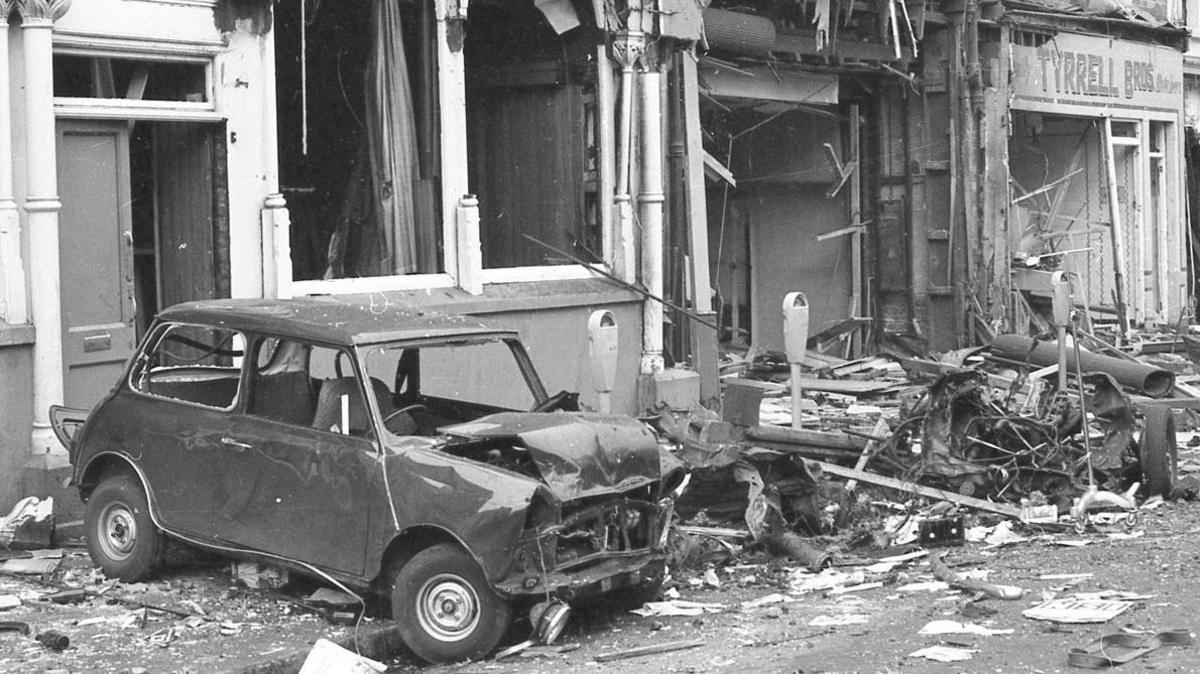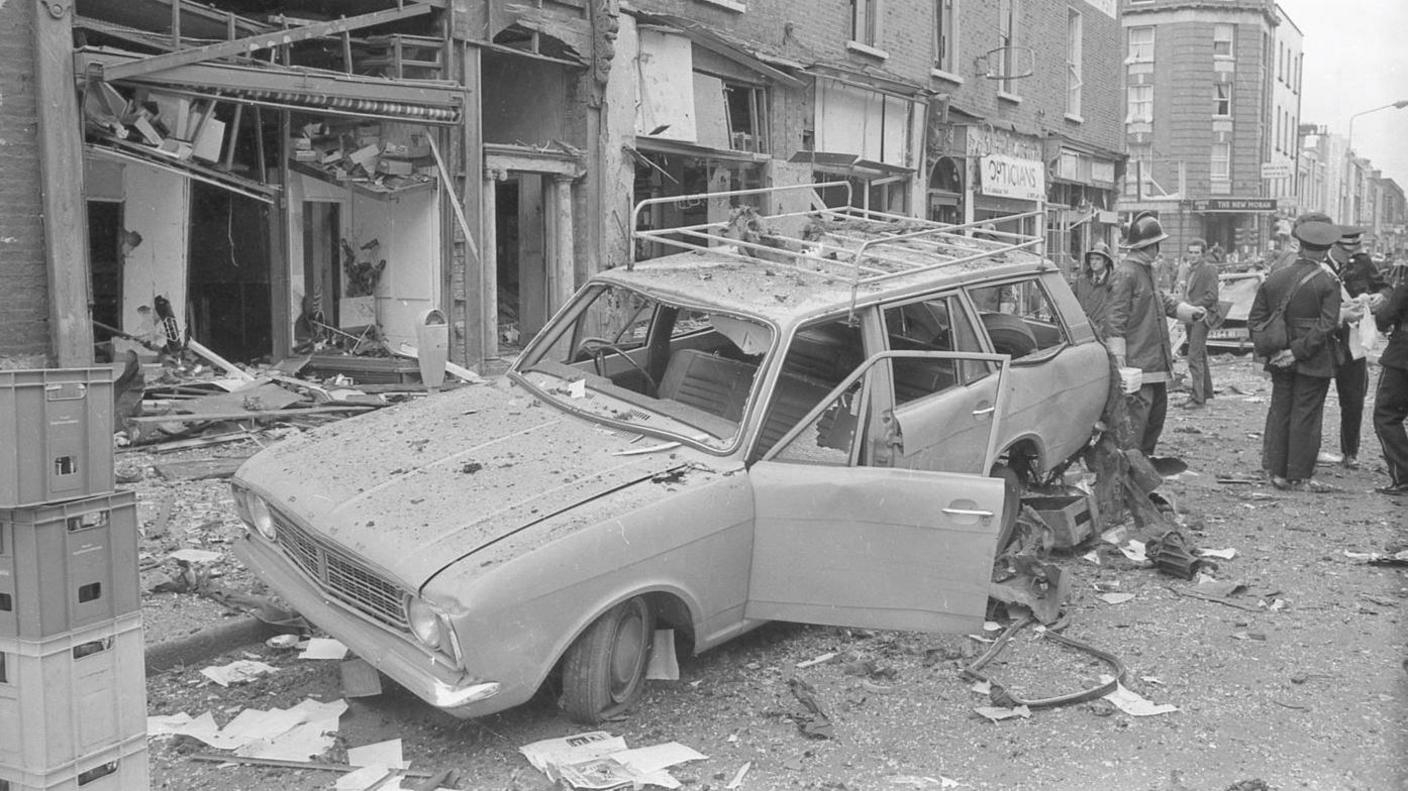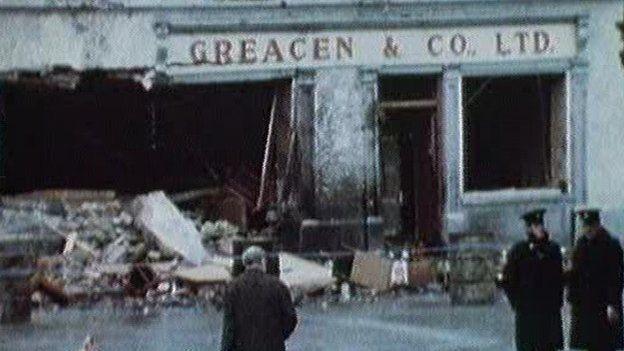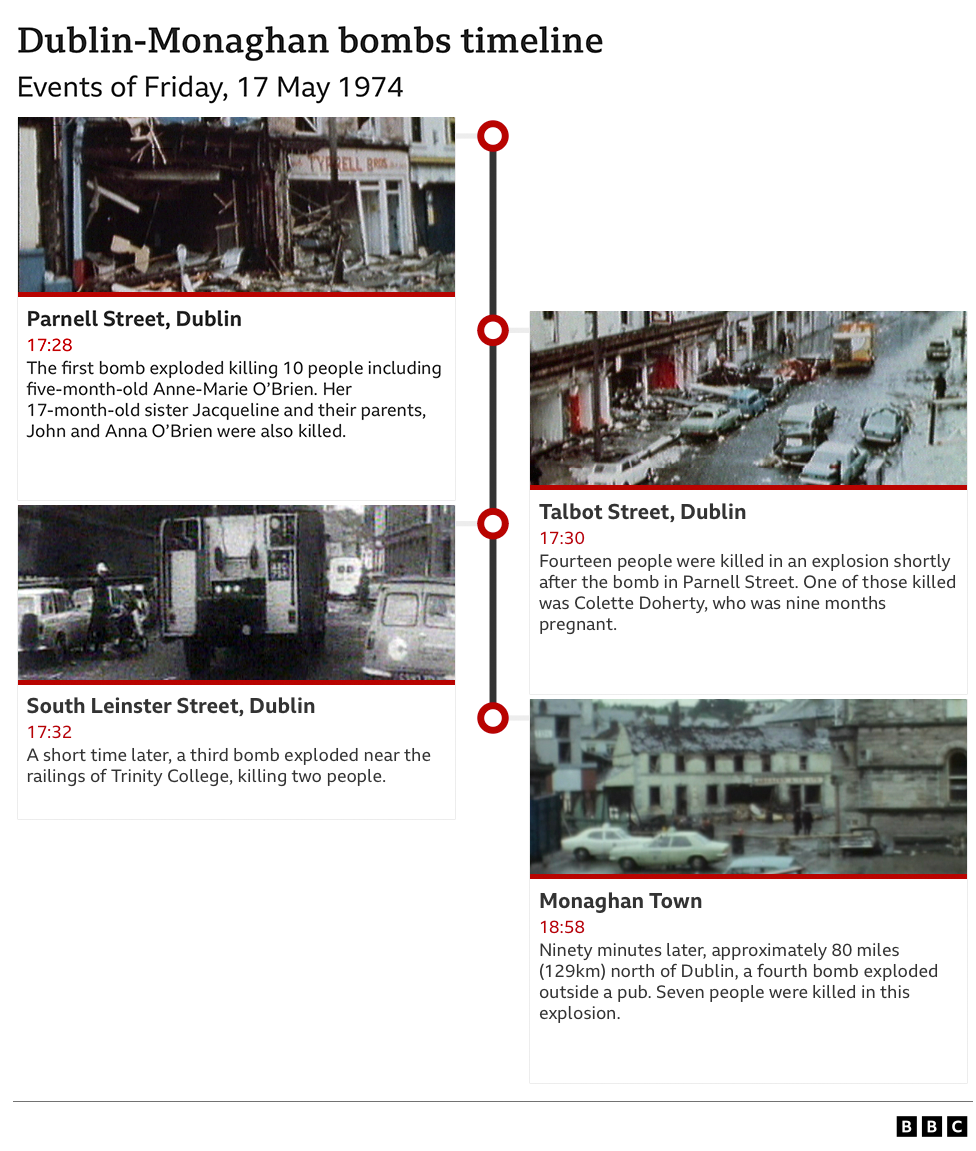What happened on the deadliest day of the Troubles?

The aftermath of the explosion at Parnell Street in Dublin 1974
- Published
Four car bombs exploded without warning, visiting murder and destruction upon Dublin and Monaghan on 17 May, 1974.
The loyalist attacks killed 33 people – one of them was nine months pregnant.
The Troubles would rage for another two decades, but no single day would surpass its death toll.
Fifty years later, victims’ families are still searching for the truth of what happened.

The streets were busy when three separate bombs went off in Dublin in May 1974
It was a sunny Friday in the Irish capital that day.
Just before half past five, when the streets were at their busiest, three bombs went off in quick succession.
The blasts left 26 people dead and more than 250 wounded.
Ninety minutes later, the final bomb went off outside a pub in Monaghan town, close to the border.
It claimed seven lives.
Between all the incidents, the dead ranged in age from just five months to an 80-year-old veteran of World War One.
Men, women and children going about ordinary, everyday lives.

The Monaghan bomb exploded shortly after three bombs were detonated in Dublin

Who was responsible?
The Ulster Volunteer Force (UVF) admitted responsibility 19 years later, following an ITV documentary, which claimed they had help from British security force members.
Loyalist attacks in the Irish Republic were rare, but not unheard of.
The UVF gave no specific reason for the bombings.
They occurred on the third day of a workers’ strike in Northern Ireland organised by Unionists opposed to the Sunningdale Agreement.
Signed the previous December, the power-sharing arrangement established a Northern Ireland Assembly.
It also proposed a role for Dublin in running Northern Ireland.
The strike, which lasted two weeks, brought down the deal.
Police investigations into the Dublin and Monaghan bombings, on both sides of the border, were short-lived.
No-one was ever charged in connection with the atrocity.

A total of 33 people were killed in the bombs in Dublin and Monaghan
Collusion claims
Claims of collusion have persisted for many years.
In 1996, a group called Justice for the Forgotten was formed to campaign on behalf of bereaved families and survivors.
The Irish government established an inquiry which reported under Mr Justice Henry Barron in 2003.
He stated the bombings were carried out by two sets of loyalists – one based in Belfast, the other in the Portadown/Lurgan area.
He found it likely that members of the Royal Ulster Constabulary (RUC) and Ulster Defence Regiment (UDR) either participated in the attacks, or were aware of their planning.
The judge said it was likely a farm belonging to a then RUC officer, James Mitchell, played a significant part in preparations.
The farm was the base of the UVF’s Glenanne gang, which has been linked to 120 murders in the 1970s and 1980s.
Its activities are currently being examined by a team of legacy detectives under Sir Iain Livingstone, former chief constable of Police Scotland.
Called Operation Denton, it has been given access to top secret British intelligence documents, including material on the Dublin and Monaghan bombings.
It is due to issue a report early next year.